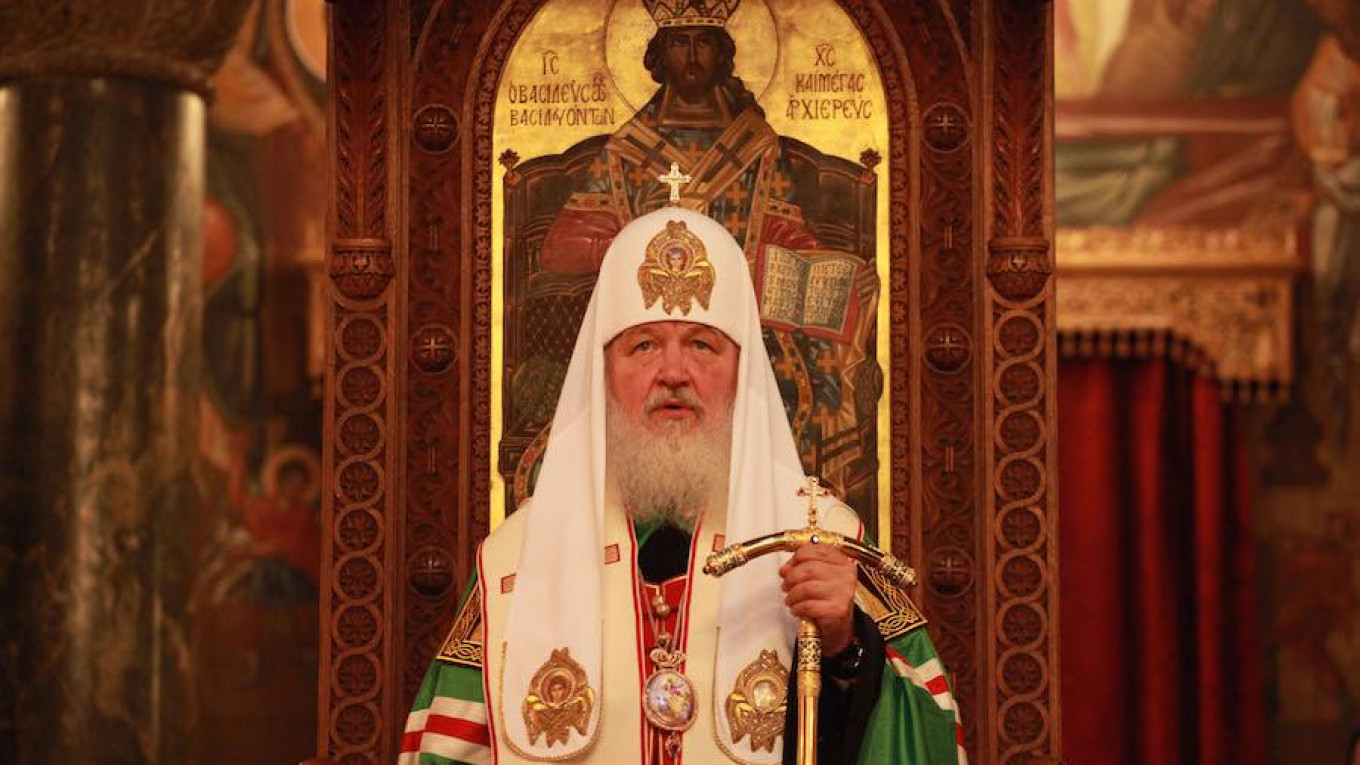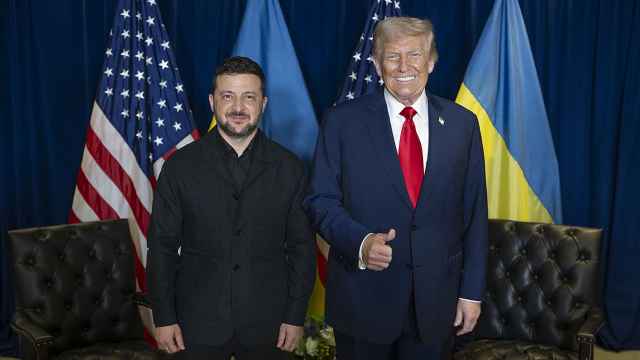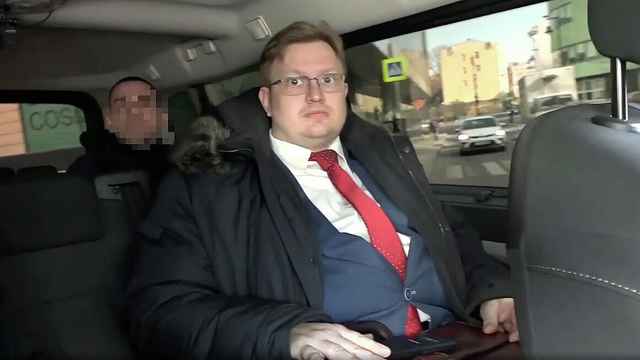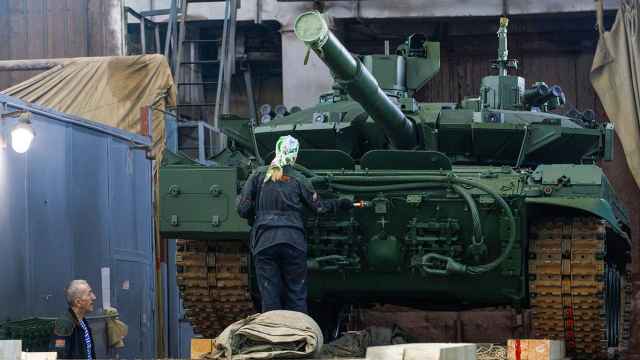It took several weeks for Patriarch Kirill, the head of the Russian Orthodox Church, to comment on the protests in St. Petersburg. Authorities there planned to transfer one of the city’s most famous museums, St. Isaac’s Cathedral, to the Church. But the city’s largely secular middle class wasn’t having it.
A month later, Russia’s most powerful cleric broke his silence. Gifting St. Isaac’s to the Church — a century after Russia’s ‘godless’ revolution in 1917 — would be “a symbol of reconciliation in our nation,” he said.
The fate of the cathedral, which was supposed to be given to the Church by Easter, has reignited a long-standing debate on the role of the Orthodox Church in Russian life.
Orthodoxy has become a powerful political force since the Holy Synod, a council of bishops in the Russian church, anointed Kirill as Patriarch in 2009. In the eight years since, Kirill has proven himself to be more than a simple man of the cloth.
A controversial, sometimes polarizing figure both inside and outside the Church, Kirill has demonstrated shrewd political instincts. He began his reign as a media-savvy orator with extensive experience in the West. In his first years as Patriarch, he presided over an ambitious reform agenda to modernize the Church.
But his political ambitions have steadily grown. With Vladimir Putin’s return to the presidency in 2012, he has positioned himself as the key spiritual ally of the officially secular Kremlin, blurring the line between Church and state.
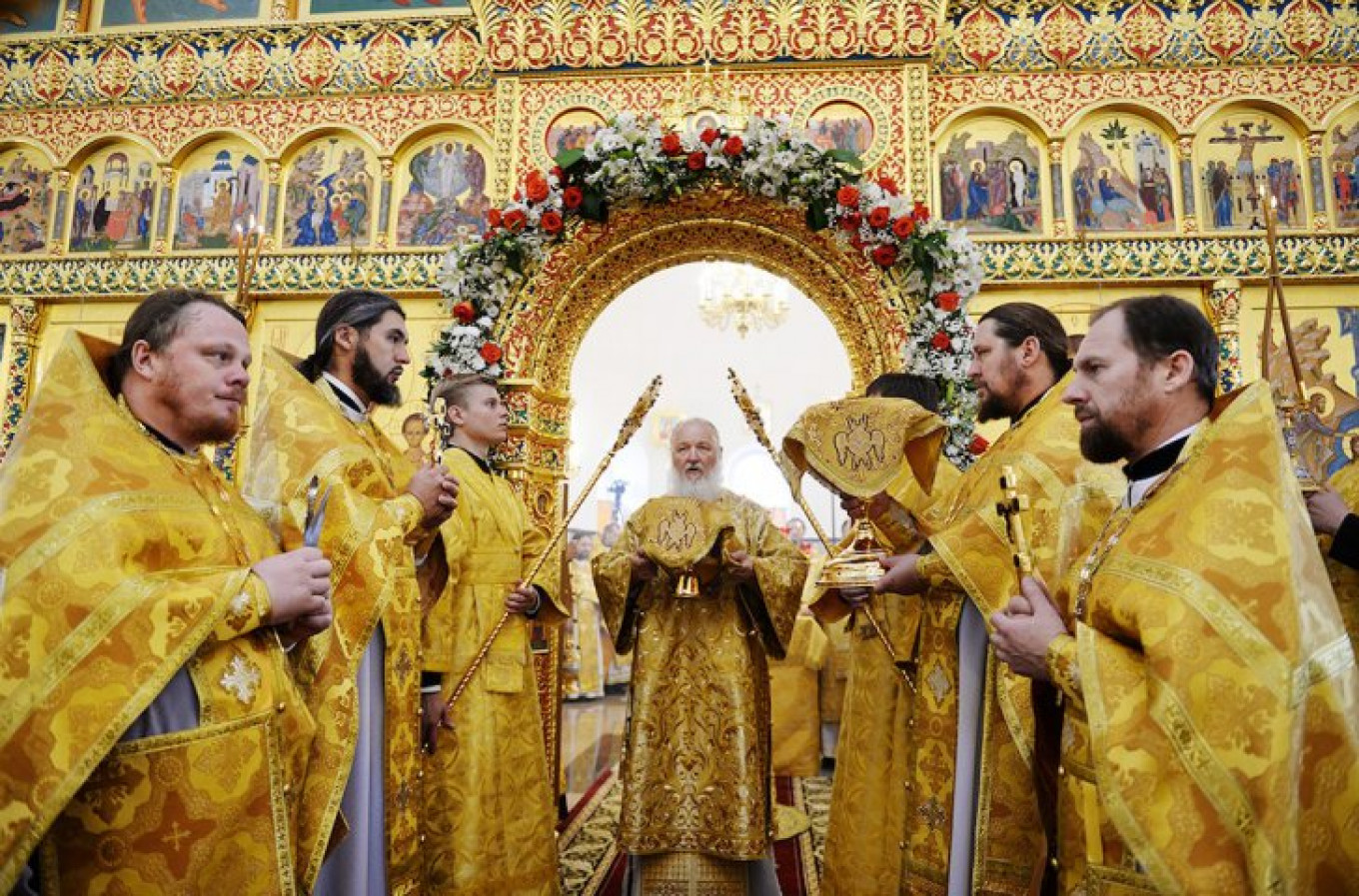
Russia’s first Soviet Patriarch
Patriarch Kirill is Russia’s first truly Soviet patriarch.
His predecessor, Patriarch Alexei, was born to Russian refugees in Estonia and spent time in the Russian emigre community in the West. By contrast, Kirill was shaped entirely by the Soviet system. Born as Vladimir Gundyaev, Kirill grew up in a one-room apartment in post-war Leningrad — just like Putin.
By the time Putin joined the KGB in 1975, the future Patriarch had already graduated from the Leningrad Seminary and taken the name Father Kirill. Like his father and grandfather, his path led him to the Church. Kirill has spoken of his grandfather, a priest who spent decades in far-flung gulags for his faith, as his inspiration.
“When he returned, he told me: ‘Don’t be afraid of anything but God,’” the Patriarch recently told Russian state television.
But Kirill’s relationship with the Soviet state could be more complicated than he lets on. As he rose through the ranks in the 1970s, he was able to travel extensively in the West. This raised eyebrows — The KGB did not allow ordinary Soviet citizens to travel abroad without close surveillance unless they were trusted.
“He was skiing in the Alps long before the current political elite ever set foot outside Russia,” says Dmitry Sverdlov, a former priest who fell foul with the institution for criticizing the Patriarch’s position on the 2012 Pussy Riot scandal.
Addressing the past has proven challenging for Kirill, as it has for both the Church and Russian society at large. Under his leadership, the Church has sought to elevate those killed under Stalin to a nearly saintly status while simultaneously celebrating Russia’s Soviet history.
Sverdlov says that even though Church officials publicly echo the government’s historical narrative, talk behind closed doors is entirely different.
"The modern episcopate's fathers were imprisoned and their grandfathers were shot," he says. "They won't let this pro-Soviet ideology dominate inside the Church."
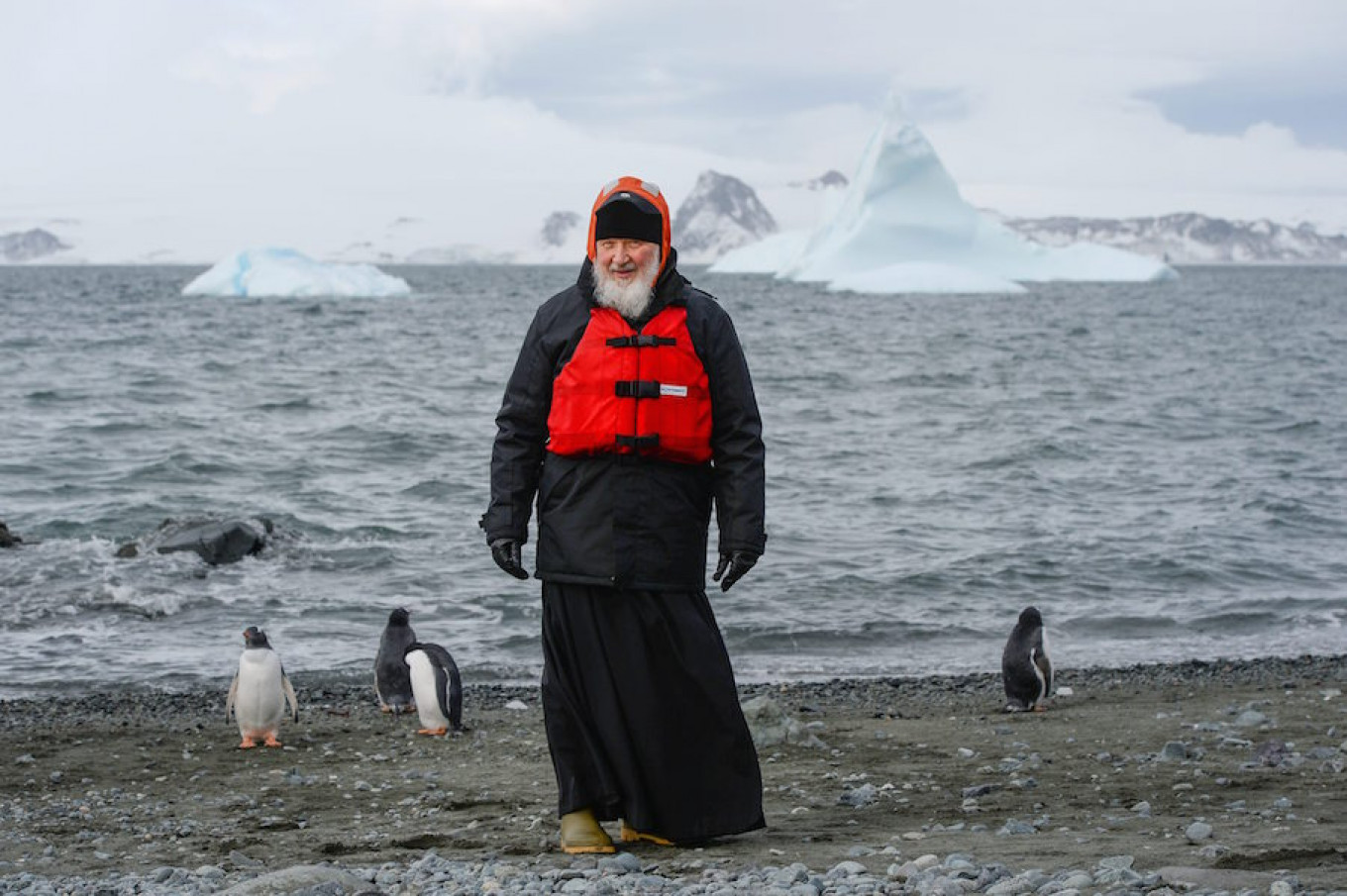
Kirill the Westerner
Kirill’s ties with the West have also raised eyebrows. While serving as the Russian Orthodox Church’s representative at the Geneva-based World Council of Churches, he built an extensive network of contacts with Western academics and clerics from other Christian denominations.
“Back then, we thought freedom was [in Europe],” he said in a documentary devoted to his 70th birthday aired on Russian state television last November. “We thought we had no future with Marxists but that we did with Christians.”
But while the young priest absorbed Western values in Europe, he now says his time abroad was when he first started to grow disillusioned with the West.
“I witnessed a deepening crisis,” he told the same program. He recalled a moment when, in 1974, a group of Protestants put forward the possibility of admitting women into priesthood during an All-Christian congress. “We did everything to stop it,” the Patriarch said, calling the move the beginning of the moral degradation of the West.
“Bringing women into church ranks was a real blow for relations between the Russian Orthodox Church and Western Christians,” says church expert Ksenia Luchenko.
Nonetheless, Patriarch Kirill continued to nurture his ties with European Christians after the fall of the Soviet Union. He infuriated Orthodox clerics by suggesting the Bible should be read in Russian, rather than the traditional Church Slavonic. In another move unprecedented in the conservative institution, he hosted a TV show during the 1990s.
“He earned the reputation of a liberal pseudo-Catholic. He was a zapadnik (pro-Westerner) to them,” Luchenko says. Sverdlov, the former priest, has a similar take. “The traditionalists inside the Orthodox church do not tolerate any ties with Western Christians. They saw him as a traitor.”
Even the public could see Bishop Kirill was different to the stereotypical clergy: he spoke in modern Russian. He was eloquent and relatable. But being an outsider is difficult — particularly in a conservative institution. As time passed, the future Patriarch tried to distance himself from his time in the West and shake off his reputation as a zapadnik.
After the death of Alexei, the former Patriarch, Kirill spent the two months leading up to the election touring Russia’s monasteries. He devoted his efforts to convincing Orthodox monks — the flagbearers of the Church’s conservative ideology — that he was “one of them.”
These efforts paid off, but his campaign was not a complete success. Ultra-conservative Orthodox websites still refer to him as a liberal in traditionalist’s clothing. Last year’s meeting with the Pope — the first time the heads of the Catholic and Russian Orthodox Churches met in over a thousand years — did not help Kirill’s cause.
“The Orthodox position has long been this: Unless the Greek Catholics in Western Ukraine return their churches to the Russian Orthodox Church, no meeting with the Pope can take place,” says Sverdlov. The meeting was not likely indicative in a change of Church policy, Sverdlov says, but an event organized by the Kremlin to soothe ties with the West amid a heated geopolitical standoff.
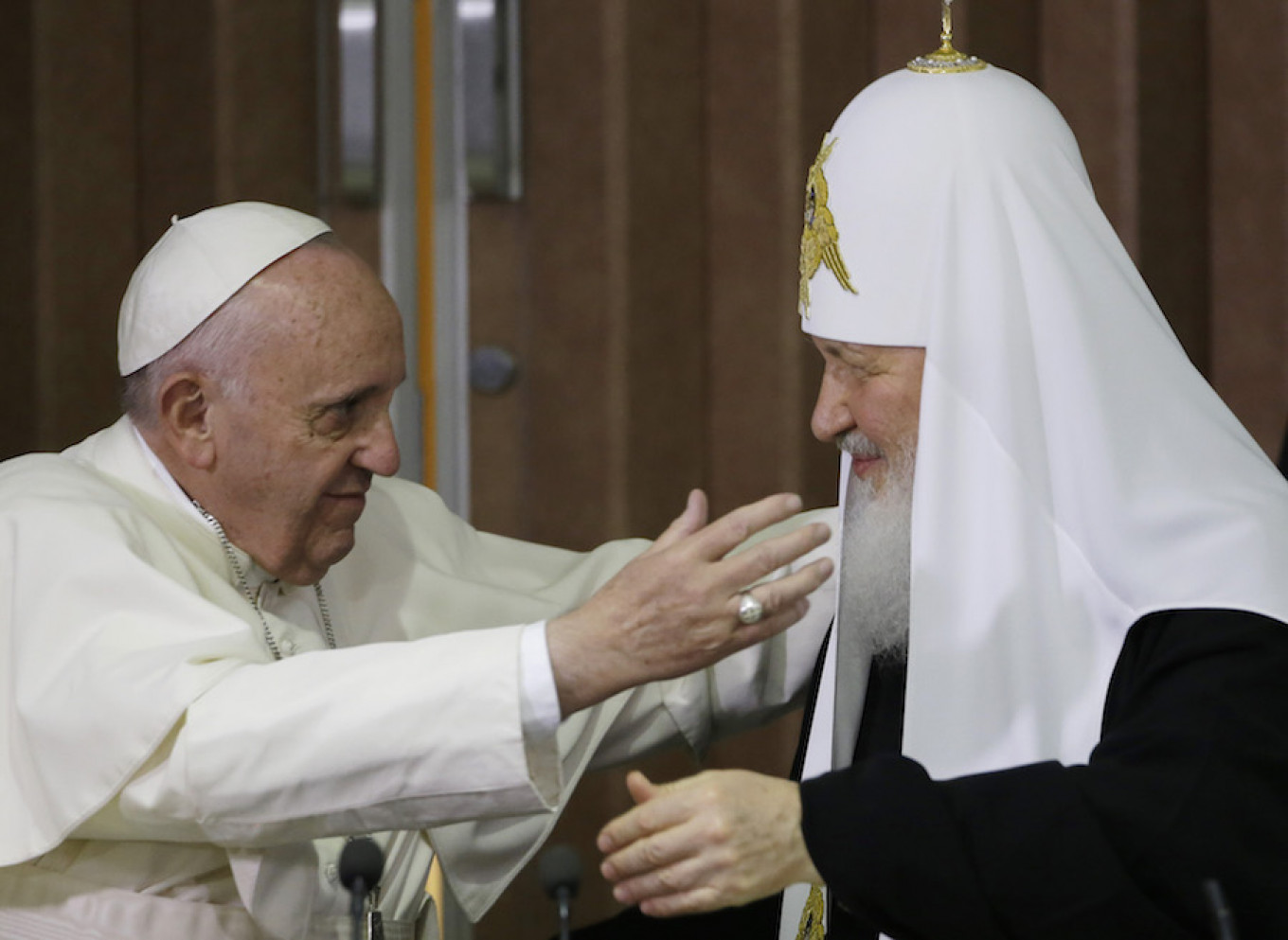
Kirill the Reformer
Kirill’s first two years as Patriarch seemed to confirm the worst fears of conservative bishops: he played the part of a reformist modernizer.
“His rhetoric was like a bomb inside the church,” says Sverdlov.
In a move reminiscent of those employed by American pastors, Kirill held rallies in Russian stadiums to attract young people to the church. He built a Synod media machine and continues to be personally involved in it today. “His press office regularly presents to him how the church is depicted in the media, this is hugely important to him,” says Luchenko.
Kirill aimed to lead a perestroika inside an institution that was both archaic and 'Sovietized.' But Patriarch Kirill’s modernization was about style, not vision. “He wanted to revise the practices, not values, of the church,” says Sverdlov.
One of his major reforms in the Church was to replace a third of its approximately 300 bishops with younger clergymen in a bid to create a loyal circle of clerics. But a part of these clerics, many of them idealists who joined the church in the romantic 1990s, have become disillusioned, according to Luchenko. Some have become critical of his increasingly authoritarian, pro-Kremlin turn. Often, he mirrors the government’s hardline policies.
Making matters worse for Russia’s provincial clergy, while reforming the Church, the Patriarch has also heavily bureaucratized it.
“Priests complain about the growing amount of paperwork,” says Pavel Lunkin, an expert on the Russian Orthodox Church. Kirill has also increased church taxes significantly. It is small town clerics who have suffered the most under the new tax burden.
“And nobody knows where the money goes,” Sverdlov says.
Kirill the Politician
When Putin returned to the Kremlin after a four-year hiatus as Prime Minister in 2012, he set out to find new sources of legitimacy for his rule after Dmitry Medvedev’s political thaw. He found it in the church.
The idea uniting the church with the state became “traditional values.” Promoting conservative family values was useful for the state, which was seeking a new cause around which Russians can rally. It was also beneficial to the church, hungry for a say on social issues in Russia.
The Patriarch saw an opening. Proximity to the state has always been an Orthodox tradition, but Patriarch Kirill took this further than his predecessor.
“The Church positioned itself as the Ministry of Ideology,” says Luchenko. The Patriarch did not shy away from praising Putin in public, even going as far as saying: “Putin saved Russia from collapse.”
The Kremlin began supporting the Church more enthusiastically: the Patriarch was given increased media attention and Orthodox values returned to school curriculums — a long sought-after goal of the Church.
Pussy Riot’s controversial 2012 “Punk Prayer” in Moscow’s Christ the Saviour Cathedral was intended to protest the strengthening political alliance between the president and the Patriarch. The activist group’s subsequent show trial and their harsh sentences — two of the group’s members were sentenced to 21 months in prison — strengthened Patriarch Kirill’s position. Russian judges also quoted the Old Testament during the trial, a symbolic gift to the Church.
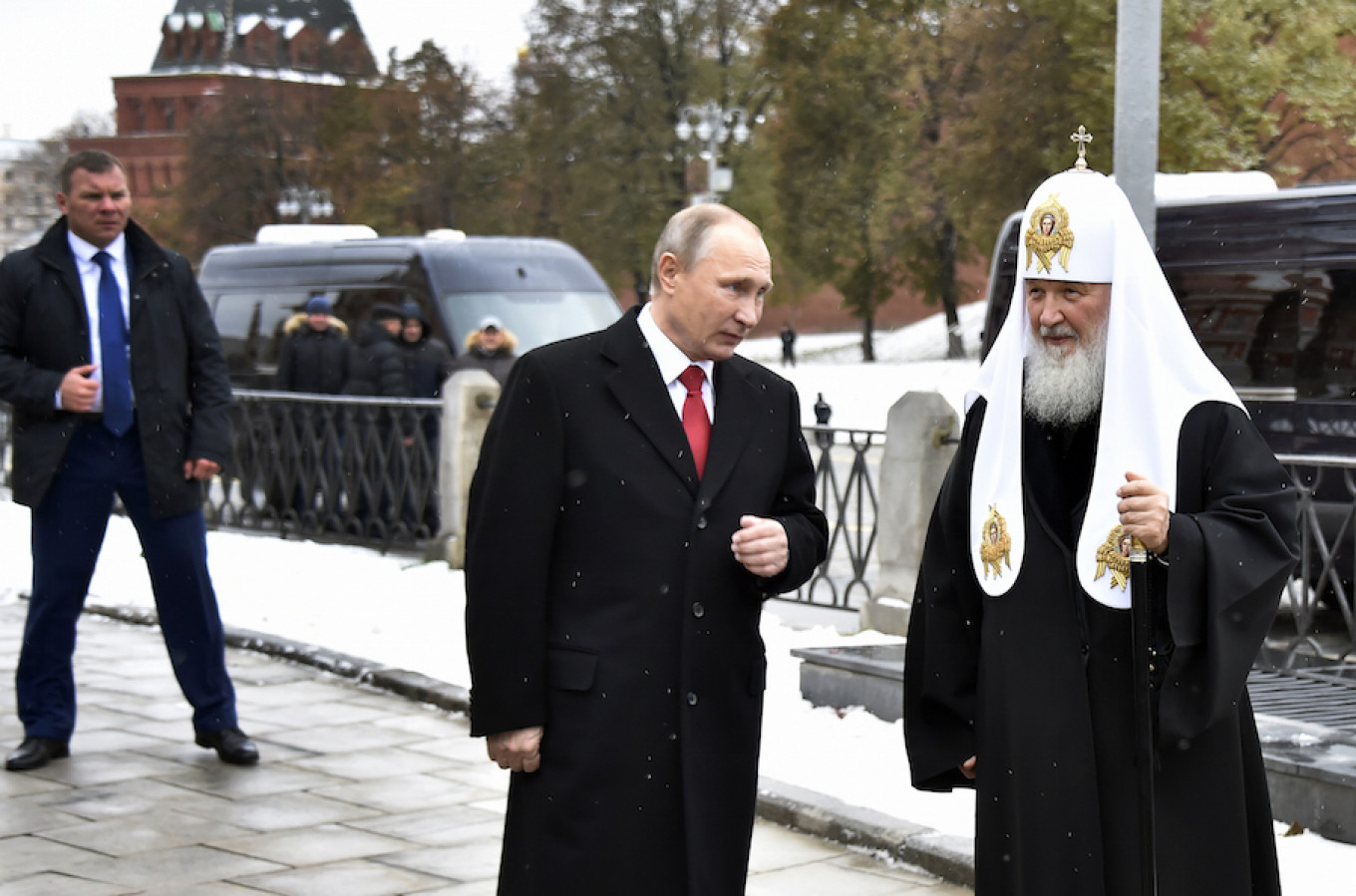
The Patriarch’s approval soared thanks to his publicity. Only a small fraction of the 65 percent of Russians who identify as Orthodox actually practise the religion, but most regard the Patriarch as a force for moral good. Even reports about the Patriarch’s alleged wealth — from yachts to $30,000 watches to property in Moscow’s luxurious House on the Embankment — did not affect his popularity.
“Corruption scandals in the Church do not affect the approval ratings of high-placed Church officials,” says sociologist Natalia Zorkaya from the independent Levada pollster.
The Patriarch had entered Russian politics as an influential player and, at that moment, the Kremlin became prudent. Since the Yeltsin era, when the church returned as a strong institution in Russia, the Kremlin has been repeatedly wary (and even jealous) of its popularity.
Putin, under whom the Russian Orthodox Church has grown more powerful, was no exception, says Zorkaya. A few months after the Pussy Riot scandal, the Patriarch stopped appearing in the public eye as frequently. “Putin only needs the church as a tool he can use from time to time,” says Lunkin.
That time of need would emerge two years later, when Putin needed the Patriarch to support his foreign policy. While his predecessor had called for dialogue in the conflict with Georgia before his death, Patriarch Kirill supported the Kremlin during the war in eastern Ukraine. The result was huge losses for the Moscow Patriarchy in Ukraine, home to millions of Orthodox believers.
When Viktor Yanukovich was in power in Kiev, Moscow hoped Patriarch Kirill would be able to unite Ukraine with Russia using the Orthodox faith. But critics say the style in which this was done was messy and colonialist. “He turned Ukraine against him even before the Maidan [revolution],” says Sverdlov.
The Patriarch also supported Russia’s intervention in the Syrian civil war on the side of embattled Syrian President Bashar Assad. Back in 1984, the KGB banished Kirill from Leningrad to provincial Smolensk supposedly for signing a resolution against sending troops to Afghanistan. “I saw danger for the motherland in this,” he told Russian television. But, 32 years later, the Patriarch said Russia’s military campaign in Syria “has a defensive character” and is therefore “justified.”
While the President and the Patriarch are politically close, their personal relations may be different. Ksenia Luchenko qualifies their relationship as “pragmatic co-operation” rather than genuine friendship. The church official much closer to Putin, she believes, is Father Tikhon Shevkunov who was once called Putin’s Rasputin.
But whatever his personal relations with the President, Patriarch Kirill has brought the Church closer to the state. That process has encountered pushback, as demonstrations against giving the Church control of St. Isaac’s Cathedral show, but it continues on.
And Patriarch Kirill appears to share with the Kremlin a vision for Russia’s future.
A Message from The Moscow Times:
Dear readers,
We are facing unprecedented challenges. Russia's Prosecutor General's Office has designated The Moscow Times as an "undesirable" organization, criminalizing our work and putting our staff at risk of prosecution. This follows our earlier unjust labeling as a "foreign agent."
These actions are direct attempts to silence independent journalism in Russia. The authorities claim our work "discredits the decisions of the Russian leadership." We see things differently: we strive to provide accurate, unbiased reporting on Russia.
We, the journalists of The Moscow Times, refuse to be silenced. But to continue our work, we need your help.
Your support, no matter how small, makes a world of difference. If you can, please support us monthly starting from just $2. It's quick to set up, and every contribution makes a significant impact.
By supporting The Moscow Times, you're defending open, independent journalism in the face of repression. Thank you for standing with us.
Remind me later.


